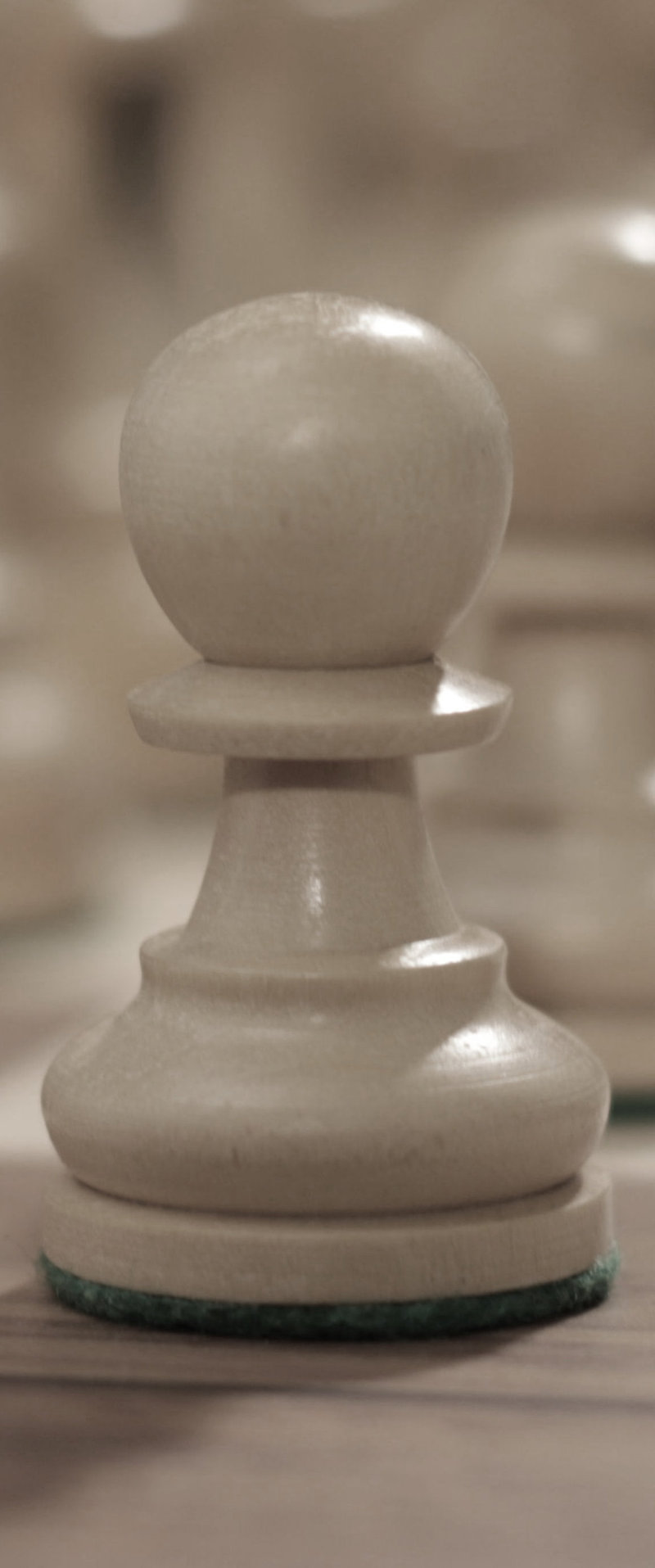6 Pawn
6.1 Tutorial
- a pawn moves one square straight forward. It may not move backwards.
- pawns take diagonally forwards to a neighbouring square and only that far. Because the pawn captures differently from its normal move it can be blocked.
As an exception a pawn can take two steps forward from the starting position. That speeds up the opening. In the opening we like to move pawns into the centre. One of the most popular opening variations begins with two pawns taking a double step and stopping each other from advancing.
A pawn which reaches the opponent's back rank could not go any further. So it is promoted to a queen, rook, bishop or knight. Usually the queen is chosen as it is the most valuable piece. This sudden gain in material makes the promotion of pawns an important tactical motif. In the endgame it becomes a focal point.
If a pawn takes a double step from its starting position and lands directly beside an opposing pawn, then on the next move only the latter may take the first pawn as though it had only advanced a single square. This unusual form of capture is known as the en passanr rule (taking 'on the way past')
In the final tutorial we see as a summary a sequence of all the possible pawn moves.

6.2 Exercises
| Help |  |
| Start again |  |




